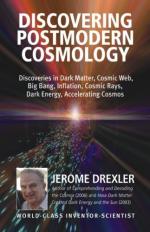|
This section contains 1,094 words (approx. 4 pages at 300 words per page) |

|
The term cosmic ray refers to highly-energetic atomic particles (mostly single protons, some proton-neutron pairs, and occasionally subatomic particles and electrons) that travel through space near the speed of light. Physicists divide cosmic rays into two categories: primary and secondary. Primary cosmic rays originate far outside Earth's atmosphere. Secondary cosmic rays are particles produced within Earth's atmosphere as a result of collisions between primary cosmic rays and molecules in the atmosphere.
The existence of cosmic radiation was first discovered in 1912, in experiments performed by the Austrian-American physicist Victor Hess (1883–1964). His experiments were sparked by a desire to better understand phenomena of electric charge. A common instrument of the day for demonstrating such phenomena was the electroscope. An electroscope contains thin metal leaves or wires that separate from one another when they become charged, due to the fact that like charges repel. Eventually the leaves (or wires...
|
This section contains 1,094 words (approx. 4 pages at 300 words per page) |

|


